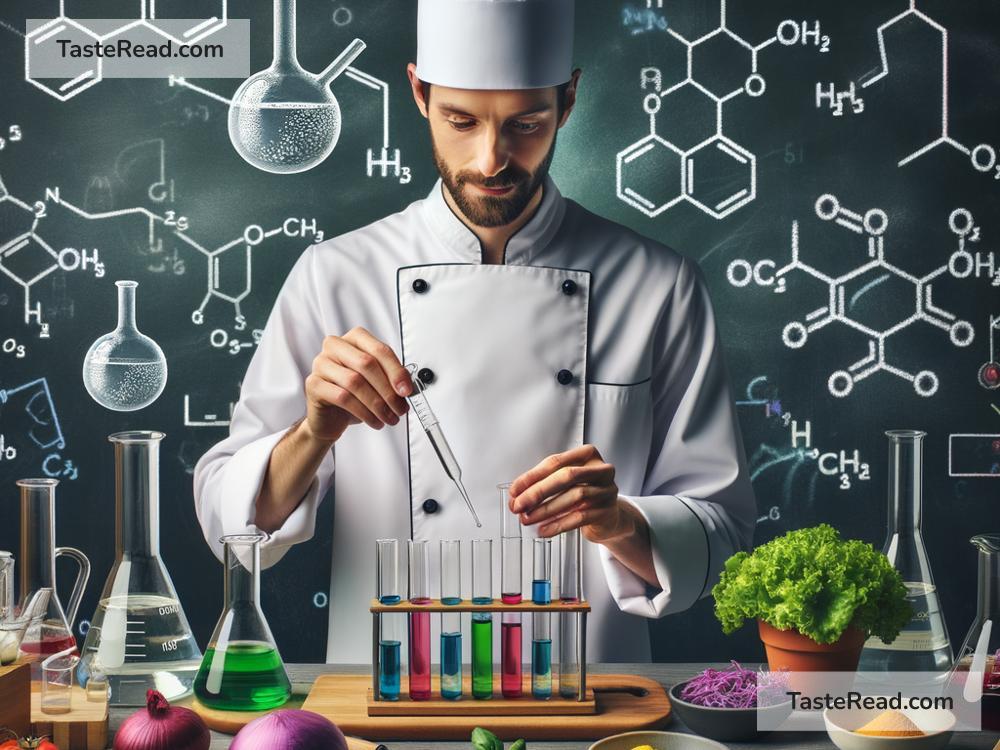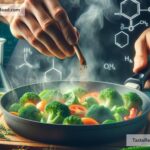The Science of Cooking with Organic Chemistry: Techniques and Tips
Cooking is more than just combining ingredients; it’s a science where molecules mix, react, and transform. The delicious food you enjoy is often the result of chemical reactions happening right in your kitchen. Organic chemistry, which focuses on the study of carbon-based molecules, plays a major role in understanding these reactions. By learning a bit about the science behind cooking, you can unlock new techniques and tips to create tastier dishes, reduce kitchen mishaps, and make food preparation more fun. Let’s dive into how organic chemistry impacts cooking in everyday life—using simple explanations and examples.
What is Organic Chemistry, and Why Does It Matter in Cooking?
Organic chemistry studies molecules that contain carbon, hydrogen, oxygen, and other atoms. These molecules form the building blocks of the foods we cook, such as carbohydrates, proteins, fats, and vitamins. When you chop, heat, or mix ingredients, chemical reactions change the molecules, resulting in different flavors, textures, and aromas.
Understanding this chemistry gives insight into how these changes happen. For example, why does bread dough rise, or why does meat taste better when seared? Let’s explore these concepts while keeping everything simple and practical.
How Heat Transforms Food: The Role of Chemical Reactions
1. The Maillard Reaction: Making Food Tasty
Ever wondered why a golden-brown crust on pizza or roasted meat tastes so good? That’s because of the Maillard reaction. When heat is applied to proteins and sugars, they reorganize into new molecules that create rich, savory flavors and aromas. Organic chemistry steps in here to explain how these molecules recombine to form tasty compounds.
Tip: To achieve the Maillard reaction, make sure your food is dry before cooking. Pat steaks dry with a paper towel before searing, or don’t overcrowd your pan. This allows heat to work its magic and prevents steaming.
2. Caramelization: Sweet Flavor Magic
Caramelization happens when sugar molecules break down under high heat, forming new compounds that taste sweet and deep. Think of the golden, gooey topping on crème brûlée or the candy-like glaze on roasted vegetables.
Tip: Use high heat (above 320°F or 160°C) and cook slowly to let the sugars caramelize. For sweeter vegetables, like carrots or onions, add a small sprinkle of sugar to enhance caramelization.
3. Protein Denaturation: Changing Texture
Proteins are long molecules that unravel (or “denature”) when exposed to heat, acid, or mechanical force. This happens when you boil eggs—the egg whites go from clear liquid to solid white—or marinate meat with acidic lemon juice to tenderize it.
Tip: To perfectly cook eggs, use gentle heat and wait for proteins to set gradually. Overheating can make eggs rubbery, as proteins tighten excessively.
Why Acidity Matters: Balancing pH in Cooking
In organic chemistry, acidity and pH levels refer to how acidic or basic a substance is. The pH scale ranges from 0 to 14, with 7 being neutral. Ingredients like vinegar, lemon juice, and yogurt are acidic, while baking soda is basic. Adjusting acidity can change not only the flavor but also the texture of food.
1. Tenderizing Meat
Acidic marinades, like those made with lemon juice or vinegar, break down tough protein molecules in meat, making them tender.
Tip: Don’t marinate meat for too long—30 minutes to a few hours is enough. Over-marinating can make meat mushy.
2. Baking Chemistry
When you bake, acids and bases react to create carbon dioxide bubbles that make your cake or bread rise. For example, vinegar combined with baking soda forms gas bubbles that create fluffiness.
Tip: Follow measurements closely in baking recipes. Using too much acid or base can mess with the rise and affect taste.
Fats in Cooking: Flavor and Texture Chemistry
Fats, such as butter, oil, and cream, behave uniquely when heated. They dissolve flavorful compounds and help with browning through organic reactions.
1. Emulsification: Mixing Oil and Water
Oil and water don’t naturally mix. To create smooth sauces like mayonnaise or salad dressing, you need an emulsifier like mustard or egg yolks, which contain molecules that bind oil and water together.
Tip: Slowly add oil while whisking your sauce to create a stable emulsion. Keeping ingredients at room temperature helps, too.
Cooking Is Experimenting
In cooking, you’re like a scientist experimenting with food molecules. By understanding the organic chemistry behind cooking techniques, you can troubleshoot common issues, enhance flavors, and create satisfying dishes.
For example:
– If your cookies aren’t spreading, it might be due to the wrong balance of fat and sugar—not enough melting molecules.
– If your soup is too salty, adding starch (like a potato) can absorb salty ions.
Always remember, recipes are guidelines. Feel free to tweak and test them while observing how heat, acidity, and fats interact with ingredients.
Conclusion: Cooking with Science
You don’t need a degree in organic chemistry to cook well, but understanding the basics can make you a better home chef. Heat causes chemical changes in proteins and sugars, acidity transforms texture and flavor, and fats create smoothness and richness. By paying attention to these reactions, you can master essential techniques like searing, caramelizing, marinating, and emulsifying.
Cooking isn’t just about following recipes—it’s about understanding the science behind the magic. So, the next time you’re in the kitchen, think of yourself as a chemist, creating mouthwatering reactions one dish at a time.
Bon appétit!


